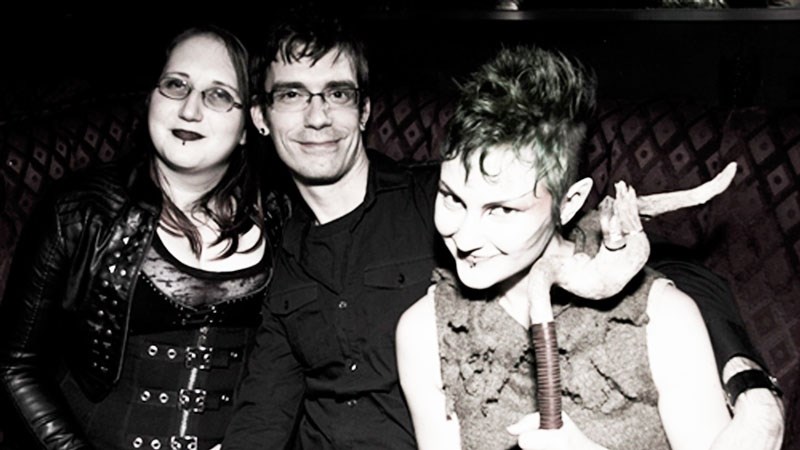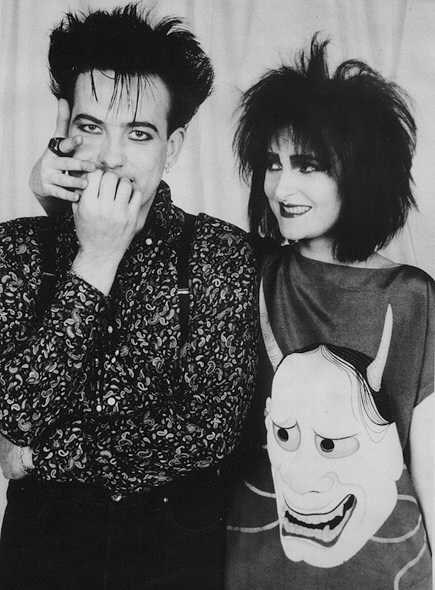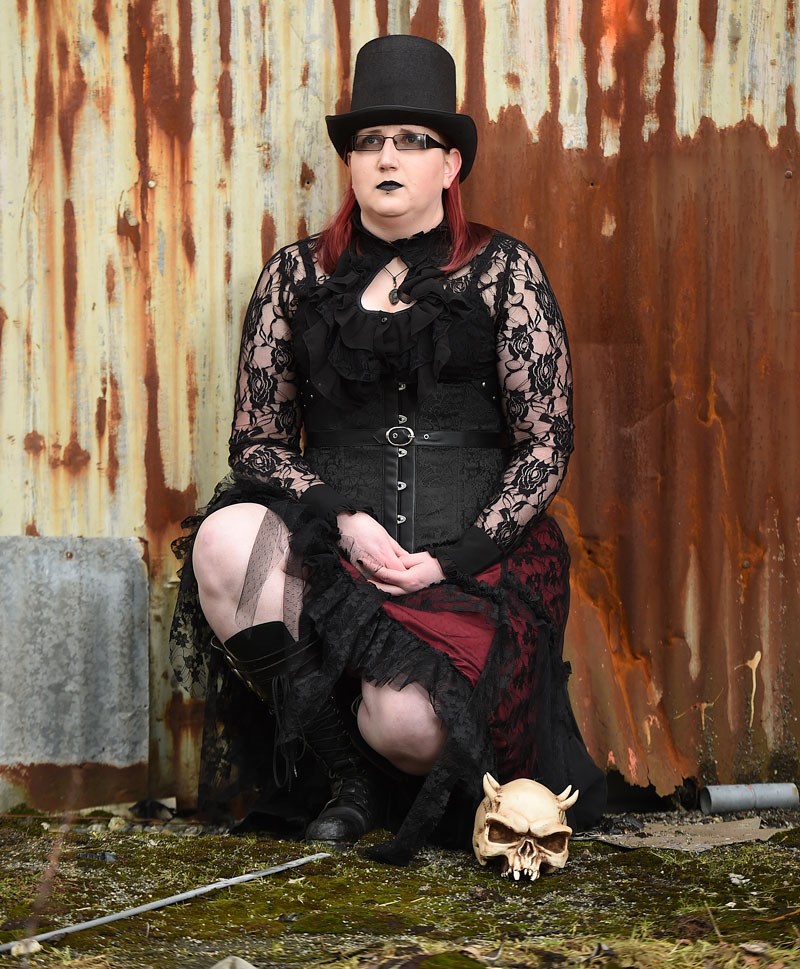This story is the first in a five-part series called Underground Vancouver, delving into little-known subcultures in and around the city.
The 1980s was arguably the last decade when belonging to an identifiable tribe was a defining factor of being a young person. The hallways of high schools were topographic maps upon which one could see the staked territories where each distinct group clustered – their names, in retrospect, almost as comical as the laundry list of cliques recited by Principal Rooney’s secretary in Ferris Bueller’s Day Off: “The Sportos, the Motorheads, geeks, sluts, Bloods, wasteoids…”
Arguably the most recognizable subculture of the ’80s – and the one most likely to be used in a sitcom flashback to instantly establish time and place – is Goth. Although relatively small in number, they seemed to be everywhere then, because they were impossible not to notice: ghost-white skin shockingly contrasted against black clothes, black makeup, black fingernails, dyed black hair (usually teased and crimped into an enormous nest, in tribute to aesthetic godparents Robert Smith and Siouxsie Sioux). They tended to cling to dark corners and preferred nighttime, hence a supplementary moniker: “batcaver.” Goths looked like trouble but were usually anything but. Like so many misfits, they didn’t feel at home in the world, so they created their own.

Goth seemed to disappear with the era that birthed it, but the truth is more complicated: Although it did shrink, it also dove deeper underground, and mutated into something that looks and sounds different than before. Disciples remain everywhere, including in Greater Vancouver, where Teela Hudak is one of the culture’s most active true believers. Her club night, Descent – at the Red Room, where she DJs under the name Surreal – marks its 10-year anniversary in August, and last month she hosted the first Descent Goth Meetup in her home base of New West.
Hudak, who is in her 30s, is too young to have experienced Goth’s first incarnation. “My involvement started when I turned 19,” she explains. “I’d dressed Goth as a teenager, but I didn’t know a lot of Goths – there was just my core group of, like, five people. I found out much later that there actually was an all-ages Goth night that was running at that time, called Resurrection, that started in Surrey and eventually moved to Playdium at Metrotown, and then it got rebranded as [a 19-plus club night called] Sanctuary. This was almost 10 years ago.”
Sanctuary proved popular enough that it enjoyed a 12-year run; Descent now takes its place as, says the club’s Facebook page, “the one true underground Goth night of Vancouver.” There, Hudak and her fellow DJs spin the vintage likes of the Cure, Bauhaus and the Sisters of Mercy, but also latter-day acts whose sound adheres closer to metal and electronica, including Razed in Black, Combichrist and Aesthetic Perfection. (Tellingly, Hudak’s entry points to Goth, in the ’90s, were Nine Inch Nails and Marilyn Manson, whose sonic and sartorial hallmarks have a much more detectable influence upon current bands than their ’80s forebears.)
Although she concedes that, at least locally, it isn’t as prevalent as it used to be (“In the 15 years I’ve been around the scene, probably five years ago was the strongest I’ve seen it”), Hudak says Goth is “a lot more sizeable than most people realize.
“Part of the nature of people in the Goth scene is that they’re not the most social people in the world sometimes,” she explains, laughing. “There can be some reluctance to go out. For an average club night, you can have anywhere from 50 people to 200, but not everyone enjoys a club atmosphere. It can be too overwhelming, too loud.”
Although she and her colleagues aim to make Descent as welcoming as possible to everyone (“We don’t enforce a dress code. I’m very passionate about my subculture and my music, and I don’t want someone to be discouraged from coming to check it out”), Hudak’s recognition of a nightclub’s not-for-everyone environment spurred her to host the first Goth Meetup in February. Promoted via Descent’s social-media outlets, it was held at, of all places, a Boston Pizza. “Mostly because I was looking for a location that was flexible in terms of group size, easily accessible by transit, and wouldn’t necessarily care as much if we were there for a few hours.”

The meet-up drew between 30 and 35 people. “People talked about their experiences, where they work, what they’re passionate about, there was some discussion about music. One of the tables was quite engaged in the history of the scene in Vancouver, its current state, which events are happening and are worth going to. There was a bit of talk as well about what kind of non-club events people would like to see in the future. People got excited about an alternative craft fair or something to that effect.”
Hudak says the age range at the meet-up – the youngest was 17, the oldest in his 40s – puts lie to the notion that Goth, or any youth-identified subculture, needs to be shed like a pair of leather trousers when a person transitions into adulthood. “I know a lot of people – some of them still come to the clubs – who are in their 50s. One gentleman who attends my night is upward of 70. The beautiful thing about Goth clubs is they’re not like a normal club: You can have that age range and nobody cares.”
The reason Goth engenders this dedication into old(er) age, she says, is because it “basically boils down to a basic attitude and a set of preferences. Most people I know, if you remove music and fashion, would still be identifiable in certain attitudes that they have. I’m not saying black humour is exclusively a Goth thing, but I don’t know a single Goth who doesn’t have some appreciative sense of black humour… And there’s also just more of an acceptance of, There’s a darker side of life and that’s OK. And being open to the quote-unquote ‘bizarre.’ What most people find bizarre and off-putting, a Goth would probably look at and think, ‘Wow, that’s really neat’ or ‘That doesn’t really appeal to me, but I can appreciate why other people like it.’
“Goth isn’t a fashion statement. I mean, it is, but it’s more than that – it’s more of a lifestyle choice and a culture. People who ascribe to that culture end up staying in it for the duration.”


